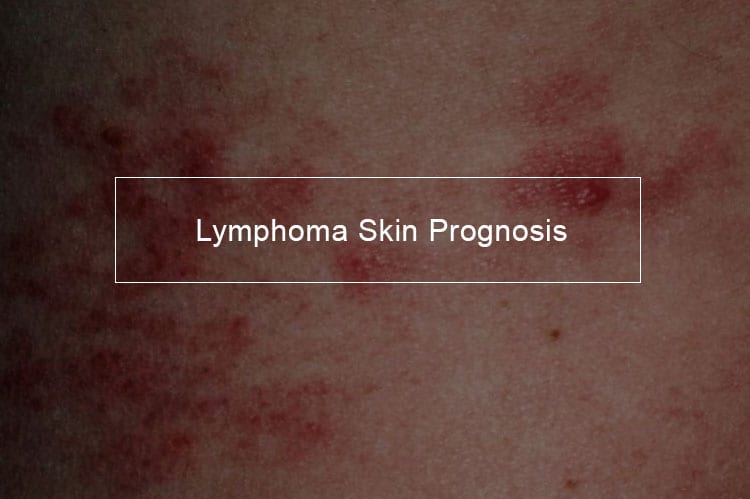
Lymphoma is cancer which begins in white blood cells known as lymphocytes (lymphocytes are part of the immune system). Skin lymphomas typically develop in the skin and do not affect any other part of the body by the time they are diagnosed. Lymphoma of the skin is not a type of skin cancer, where cancer develops from skin cells.
Generally, there are two types of lymphocytes:
- Cutaneous T-cell lymphomas
- Cutaneous B-cell Lymphomas
Cutaneous T cell lymphomas
T-cell lymphomas are the most common kind of skin lymphoma. They often appear red and dry like an eczema rash and can spread to other body parts.
Cutaneous B cell Lymphomas
Also known as B-cell skin lymphomas, they often cause lumps in the skin, usually one or two areas of the body. Most lymphomas of the skin are slow-spreading but can be fast-growing. Beware that lymphoma which begins somewhere else in the body and then spreads to the skin is not a skin lymphoma.
What are the symptoms of skin lymphoma?
Skin Lymphoma symptoms
Skin lymphomas can be both be seen and felt. Generally, the skin condition can appear as:
1. Small, pimple-like lesions known as papules.
2. Skin lymphomas could also appear as flat lesions, patches.
3. Beware that lymphoma of the skin can look like plaques; thick raised or lowered lesions.
4. Nodules or tumors might be a potential sign of lymphoma of the skin; the presence of large lumps or bumps underneath the skin.
Lymphoma skin lesions are usually itchy, red to purple and scaly. The lymphoma might appear as multiple types of the lesion and on separate parts of the skin. Oftenly lymphoma appears in parts of the skin which are not exposed to the sun. Some types of skin lymphomas occur as a rash over some or most of the body. Sometimes larger lesions can form.
Together with skin issues, in rare cases, skin lymphoma can cause common signs, such as:
- Sudden weight loss
- Severe itchiness
- Fever
- Profuse sweating especially at night- enough to soak the patient’s clothing
In some cases the skin lymphoma reaches the lymph nodes, making them bigger. An enlarged lymph node can be felt as a lump under the skin, groin region, in the neck, or underarm. Most of these signs are likely to be caused by other, less severe conditions. However, if you are experiencing any of them, it is essential to be checked by a doctor so that the cause can be discovered and treated.
Itchy skin lymphoma
Itching is a common sign of some types of lymphoma, especially Hodgkin lymphoma and T-cell lymphoma. Majority of people with Hodgkin lymphoma experience itching as a sign. Itching is less usual in most types of non-Hodgkin lymphoma.
Itching of lymphoma skin can be felt in patches where the skin is affected. The patches can be dry, scaly and itchy. The root cause of itching as a sign of lymphoma is not fully understood. But, research suggests that it might be as a result of chemicals known as cytokines. The immune system releases cytokines as it reacts against lymphoma cells.
Researchers believe cytokines irritate the nerves in the skin and make it itch. For most patients, the itching goes away once they start treatment. Nevertheless, it can persist during or even after the treatment.
How can I help myself if I have itchy skin lymphoma?
Scratching a rash feels good, but it worsens it. Even though it is hard not to scratch, try not to. Here are some of the things you can do to relieve lymphoma skin itch.
- Use cotton sheets and pillowcases instead of sheets made from human-made fibers.
- Use a mild washing powder suitable for sensitive skin and give your washing an extra rinse to remove any remaining traces of powder.
- Wear loose-fitting and lightweight clothes made from soft cotton. Wool and some other fabrics can irritate the skin.
- Do not wear clothes or nightwear with lace, buttons or seams which might irritate your skin.
- Use an electric razor instead of wet shaving, or avoid shaving.
- Avoid swimming pool since chlorine can irritate your skin.
- Take short, warm showers rather than long, hot ones. Long showers can dry the skin, and hot water can make itching worse.
- Do not use alcohol-based products such as wet wipes and antiseptic hand wash as these products can dry and irritate the skin.
- Ask your doctor for a suitable skin care product, including soaps, deodorants, and moisturizers. You might become sensitive to some products after treatment.
What does lymphoma of the skin look like?
How does cutaneous b cell lymphoma look like?
Different types of skin lymphoma can look different from one another, especially in the early stages. This section illustrates the appearance of skin lymphomas. But, do not be alarmed if your skin has a similar appearance. Other conditions may look similar, but can only be distinguished from skin lymphoma using specialized tests on the cells of the affected area.
Cutaneous b cell lymphoma
Cutaneous b cell lymphoma is less common than T-cell skin lymphomas. They mostly appear on the head, legs, or back. One might have small, raised, solid areas of skin or thickened areas. They may be ulcerate and become infected. You may have only one or multiple nodules, either grouped or more widely spread out.
Cutaneous T cell lymphoma
This is the most usual form of skin lymphoma, also called mycosis fungoides. At an early stage, patches of dry, discolored skin often appear. The patches are usually red. They might look like more common skin conditions such as dermatitis, eczema or psoriasis.
The patches tend to be dry, sometimes itchy and scaly. They mostly occur on the buttocks or between the waist and shoulders but can occur anywhere on the body. The lymphoma can develop as patches of lighter or darker skin stone mainly black skin.
Regions of the skin can become harder and thicker but remain flattened. They might be itchy and sometimes ulcerated. They are more common on the buttocks, in folds of skin and on the face. In most people, the skin lymphoma never develops beyond the patch and plaque stage.
Some individuals with T-cell skin lymphoma develop erythroderma: generalized reddening of the skin, which can be very itchy, scaly and dry. The palms skin and soles of the feet can thicken and crack. Besides, lymph nodes may swell, often in the neck, armpits or groin.
Is skin lymphoma deadly?
Skin lymphoma treatment
Even though skin lymphomas are a form of cancer, in most cases they are slow growing and do not affect life expectancy. They act more like a long-term skin condition than cancer. Most people with slow-growing skin lymphoma do not require treatment straight away. Instead, the doctor monitors the condition. This is commonly known as active monitoring and is mostly used in early-stage lymphoma that would not benefit from treatment.
Most people find active monitoring very hard to cope with. It can be challenging to wait for repeat appointments and tests and then know that having no medication is the best option for you at that moment. Nevertheless, research and many years of experience have proved that it is the best method for some types and stages of skin lymphoma.
If your doctor thinks that treatment would help you, there are many different options. Some medications are applied directly to affected areas of your skin such as creams, lotions, light therapy or radiotherapy.
Other treatment affects your entire body such as immunotherapy; drugs that use your immune system to help fight lymphoma cells; steroids; chemotherapy or stem cell transplant. If you have lymphoma of the skin affecting a single region of skin, you might have surgery to remove it. The treatment an individual requires depends on the type of skin lymphoma they have and on how much area of the body is affected.
Lymphoma of the skin treatment
The treatment of skin lymphoma is based on the kind of lymphoma, as well as its location, and it is level. However, other factors, such as your health status, can also affect your treatment options. Consult your doctor if you have any concerns about the treatment plan he or she recommends. We will discuss two lymphoma treatments.
- Syzare syndrome
- B cells lymphoma treatment
Syzare syndrome
The systematic treatment used for advanced Mycosis Fungoide, which are also used to treat Sezary syndrome. By the time this disease is being diagnosed it usually has spread beyond the skin, so treatments directed only on the skin are less useful than in Mycosis Fungoide (even though some might still be part of remedy).
Photopheresis may help cure the disease, as may retinoids, such as bexarotene. Chemotherapy or alemtuzumab can also be useful. However, these are typically reserved for lymphomas that are no longer responding to other remedies. A stem cell transplant might be another alternative if other treatments are no longer working.
As with advanced Mycosis Fungoide, these remedies are frequently helpful for a time, but they rarely lead in a cure. Modern treatments are now being studied, so it might be worth considering entering a clinical trial of one of these.
B cells lymphoma treatment
These kinds of lymphoma can sometimes be watched without remedies until health conditions develop, but typically treatment is advised.
For lymphomas that are in one spot or only a few spots close together, first medical intervention is usually radiation therapy or surgery. Other alternatives might include topical medicines such as corticosteroids, chemotherapy, bexarotene (Targretin), or imiquimod (Zyclara); or injected corticosteroids. If the lymphoma does not go away completely, one of the other treatments can be tried.
For lymphomas that have spread over larger parts of the skin, treatment options include rituximab (Rituxan), topical medicines (such as corticosteroids, chemotherapy, bexarotene, or imiquimod), injected corticosteroids, or radiation therapy. Systemic chemotherapy (sometimes with rituximab), like that used for other slow-growing B-cell lymphomas, can also be used if there are many lessons.
What happens if it is not a lymphoma skin rash?
Your doctor may have discussed the probability of a skin lymphoma with you, and you may have geared yourself to be diagnosed with a type of skin cancer. After diagnosing your skin, your doctor may find that you have a non-cancerous skin problem.
Even though you might be pleased with this news, some people find it both physically and emotionally hard to cope with. If you find it difficult accepting your diagnosis, talk to your specialist. He or she can help you deal with the situation and explain what happens next.
Whether or not you have lymphoma of the skin, you might be struggling to cope with signs or changes of your skin appearance. It might be useful to you, to consult a specialist organization working with persons affected by visible skin problems.




